Overview
This article delves into how businesses in distribution can effectively harness cloud computing to enhance their operations. It presents five key strategies that are essential for success in this digital age:
- Utilizing real-time analytics can significantly improve decision-making and operational efficiency.
- Selecting the appropriate cloud model—be it public, private, or hybrid—is crucial for aligning with business needs.
- Ensuring seamless integration with existing systems is vital.
These strategies collectively lead to substantial cost savings and operational improvements, making cloud computing an indispensable tool for modern distribution businesses.
Introduction
Cloud computing has emerged as a transformative force for businesses, especially in the distribution sector, where efficiency and real-time data access are critical. This article delves into five essential strategies that empower distribution companies to fully leverage cloud solutions. From grasping the fundamentals of cloud service models to implementing effective training programs for staff, each strategy plays a vital role.
However, as organizations embark on this digital transformation, they often encounter the challenge of selecting the appropriate cloud model amid a landscape teeming with options and potential pitfalls.
What key considerations can assist businesses not only in adopting cloud technology but also in thriving within a competitive market?
Understand Cloud Computing Fundamentals
The cloud for business represents a transformative approach to delivering computing services via the internet, empowering businesses to leverage resources such as servers, storage, databases, networking, software, and analytics without the constraints of physical infrastructure. The primary service models include:
- Infrastructure as a Service (IaaS): This model provides virtualized computing resources over the internet, enabling companies to scale their infrastructure as necessary without incurring significant upfront investments.
- Platform as a Service (PaaS): PaaS offers a robust framework for developers to build, test, and deploy applications, thereby streamlining the development process with essential tools and services available online.
- Software as a Service (SaaS): SaaS delivers software applications over the internet on a subscription basis, allowing users to access the latest features and updates effortlessly, without the burden of installation or maintenance.
By 2025, approximately 90% of organizations are projected to adopt at least one of these service frameworks, with IaaS, PaaS, and SaaS becoming integral components of operational strategies in distribution. Understanding these frameworks is crucial for companies to select solutions that align with their operational goals and scalability needs. As industry leaders stress, a comprehensive understanding of cloud service models is vital for navigating the dynamic landscape of cloud computing.
10X ERP exemplifies this evolution with its comprehensive cloud-based ERP solutions tailored specifically for distributors. Featuring real-time information processing, a user-friendly interface, seamless integrations through an API-first approach, and a transparent pricing structure, 10X ERP empowers businesses to efficiently manage operations while ensuring a superior user experience.
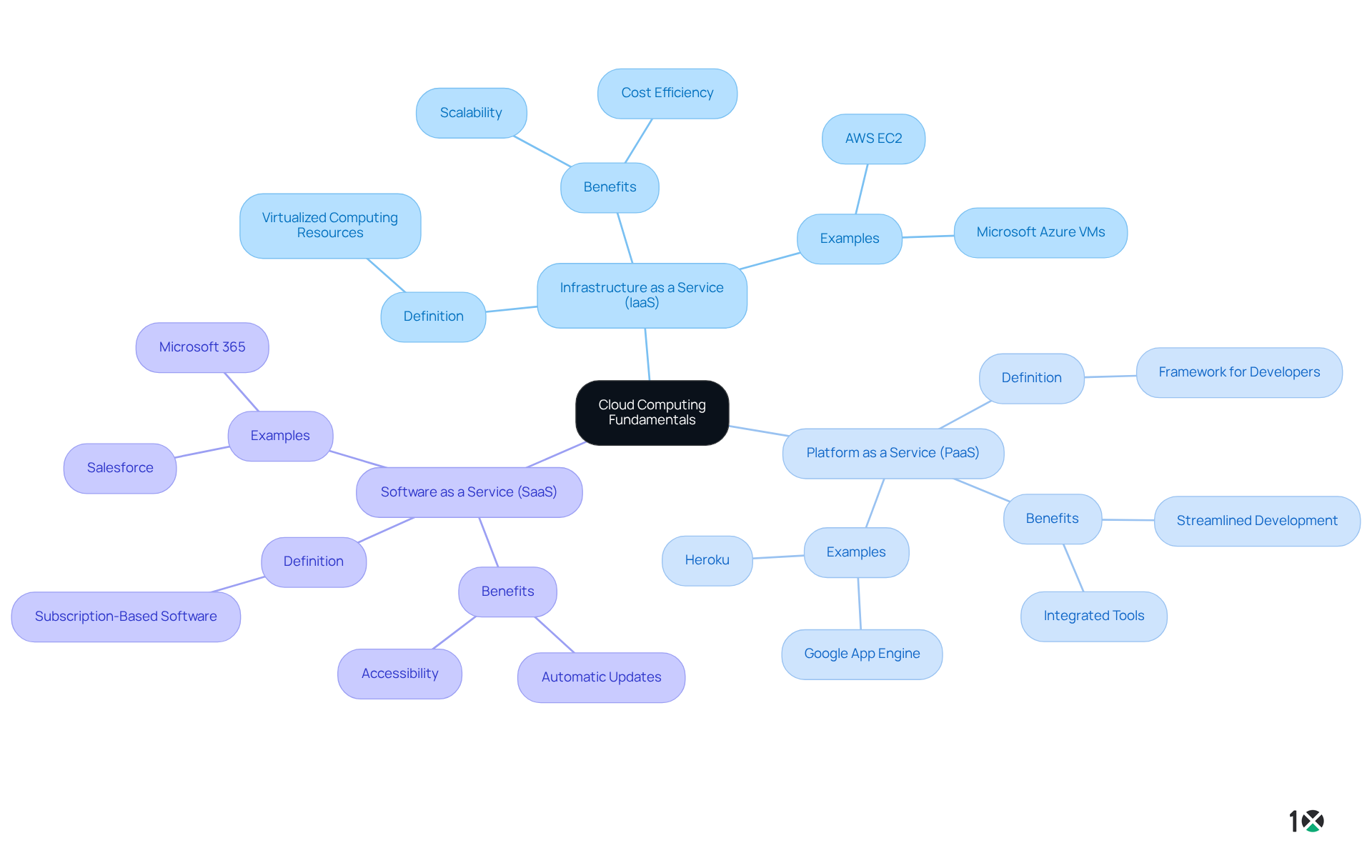
Leverage Cloud Benefits for Distribution Efficiency
Cloud for business offers numerous benefits for distribution companies, especially in terms of real-time information access. This capability provides instant visibility into inventory levels, sales data, and customer information, significantly accelerating decision-making processes. For instance, organizations utilizing real-time analytics have reported a 21% increase in year-over-year revenue growth compared to peers lacking such capabilities. Furthermore, implementing real-time tracking can lead to a remarkable 10% decline in customer inquiries, thus enhancing operational efficiency.
Moreover, solutions such as 10X ERP provide exceptional scalability and a smooth user experience, enabling companies to adjust their resources in response to changing demand. With a fully cloud-hosted and browser-based platform, 10X ERP ensures that companies only pay for what they use, contributing to more predictable operational budgets. In fact, a study found that companies leveraging real-time demand signals achieve 14% higher profit margins in dynamic pricing scenarios.
Cost savings represent another critical benefit, as the cloud for business reduces reliance on costly on-premises infrastructure and maintenance. This shift not only lowers capital expenditures but also streamlines operational costs, with businesses reporting savings of 5% to 15% annually through the implementation of transport management systems with real-time tracking. Additionally, organizations implementing real-time operational analytics report a 63% average reduction in process inefficiencies and waste, according to Deloitte.
A compelling example of the effectiveness of real-time information access is Coca-Cola’s implementation of a real-time analytics system, which resulted in a 20% reduction in inventory costs within the first year.
Furthermore, improved collaboration is supported by online solutions such as 10X ERP, enabling teams to cooperate effortlessly regardless of their physical locations. This enhancement in communication and project management is vital for maintaining operational efficiency in today’s fast-paced distribution environment.
However, it is essential to be aware of potential pitfalls when implementing real-time data solutions, such as ensuring proper training and change management to mitigate resistance from staff. By leveraging these benefits of cloud for business, distribution companies can significantly streamline their operations, improve efficiency, and ultimately enhance overall productivity.
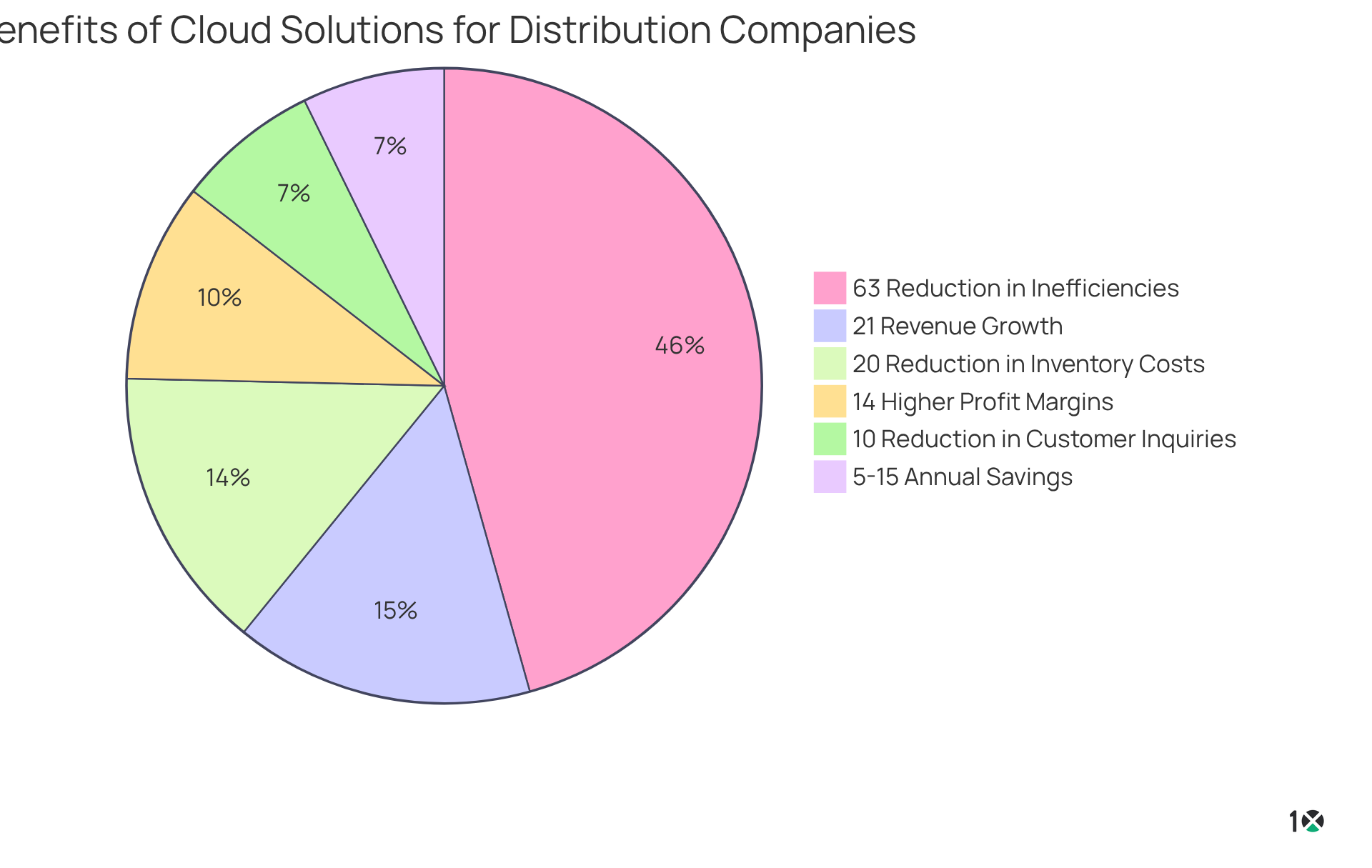
Choose the Right Cloud Model for Your Business
When selecting a cloud model, it is essential to evaluate the following options:
-
Public Cloud: This model is highly cost-effective and scalable, making it ideal for businesses with fluctuating workloads. However, it raises concerns regarding information security and compliance, particularly for sensitive details. In 2025, security worries continue to be a major concern, with statistics indicating that 45% of information breaches occur in public online environments. Organizations with established online security measures have saved an average of over $700 million, underscoring the significance of proper security planning. With 10X ERP’s comprehensive internet-based solutions, you can ensure high availability and information integrity, utilizing premium server hosting and continuous information backup.
-
Cloud for business: Offering enhanced security and control, the cloud for business is suitable for enterprises with stringent regulatory requirements. Although it necessitates a greater investment, it provides customized solutions that can address specific operational needs, ensuring compliance and information protection. 10X ERP supports this framework with robust security features, including two-factor authentication and compliance assurance, making it a reliable option for sensitive operations. Our commitment to a lifetime partnership guarantees ongoing support tailored to your needs.
-
Hybrid Model: This approach combines the benefits of both public and private systems, enabling businesses to utilize cloud for business to store sensitive information on a private platform while leveraging the scalability of a public framework for less critical operations. This flexibility is increasingly preferred, as 80% of organizations utilizing various platforms opt for hybrid solutions, and 89% of organizations employ more than one platform for storage and workloads. 10X ERP’s seamless API integrations facilitate this hybrid approach, ensuring that your distribution operations can scale efficiently while maintaining data security. Our transparent service experience guarantees that you are supported throughout your journey.
To identify the most suitable framework for your operations, evaluate your company’s specific needs, budget, and compliance demands. Engaging with computing specialists can provide valuable insights into the most efficient strategies for utilizing these models in the distribution sector. As Vivek Kundra observed, computing services are akin to shared public utilities, highlighting their accessibility and cost-effectiveness. With 10X ERP, you can navigate these options with confidence, backed by unparalleled support and a commitment to continuous product improvements.
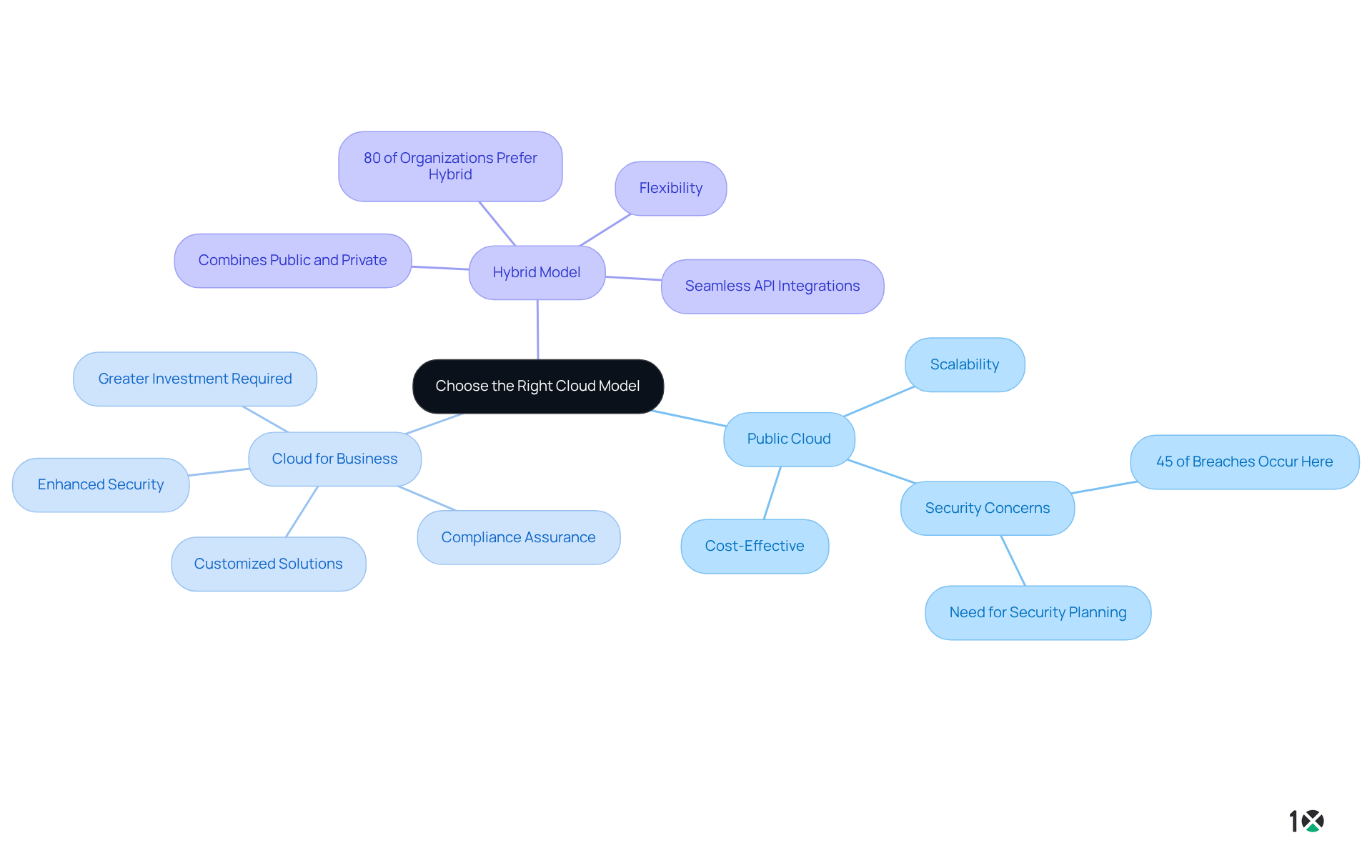
Integrate Cloud Solutions Seamlessly with Existing Systems
To achieve seamless integration of cloud solutions with existing systems, consider the following strategies:
- API Utilization: Harness the power of APIs to connect cloud applications with on-premises systems, facilitating smooth data flow and automating processes. With over 83% of enterprises leveraging APIs to maximize ROI on their digital assets, effective API utilization is crucial for enhancing operational efficiency.
- Information Migration Planning: Develop a comprehensive strategy for transferring information to the cloud, emphasizing integrity and reducing downtime. Approximately 80% of company leaders view information integration as crucial for achievement; thus, meticulous planning is vital to prevent common pitfalls.
- Testing and Validation: Execute comprehensive testing of integrated systems to identify and rectify any issues prior to full deployment. This step is essential, as semantic errors during information migration can lead to flawed reporting and gaps in records.
- Continuous Monitoring: Deploy monitoring tools to track the performance of integrated systems, allowing for proactive resolution of any integration challenges. With 69% of organizations citing digital transformation as a key factor for system migration, continuous oversight ensures that systems remain aligned with business objectives.
In addition to these strategies, operations managers may have inquiries regarding the impact of online integration on current workflows or how to address potential data security concerns. By applying these strategies, you will ensure that your online solutions enhance, rather than disrupt, your existing operations.
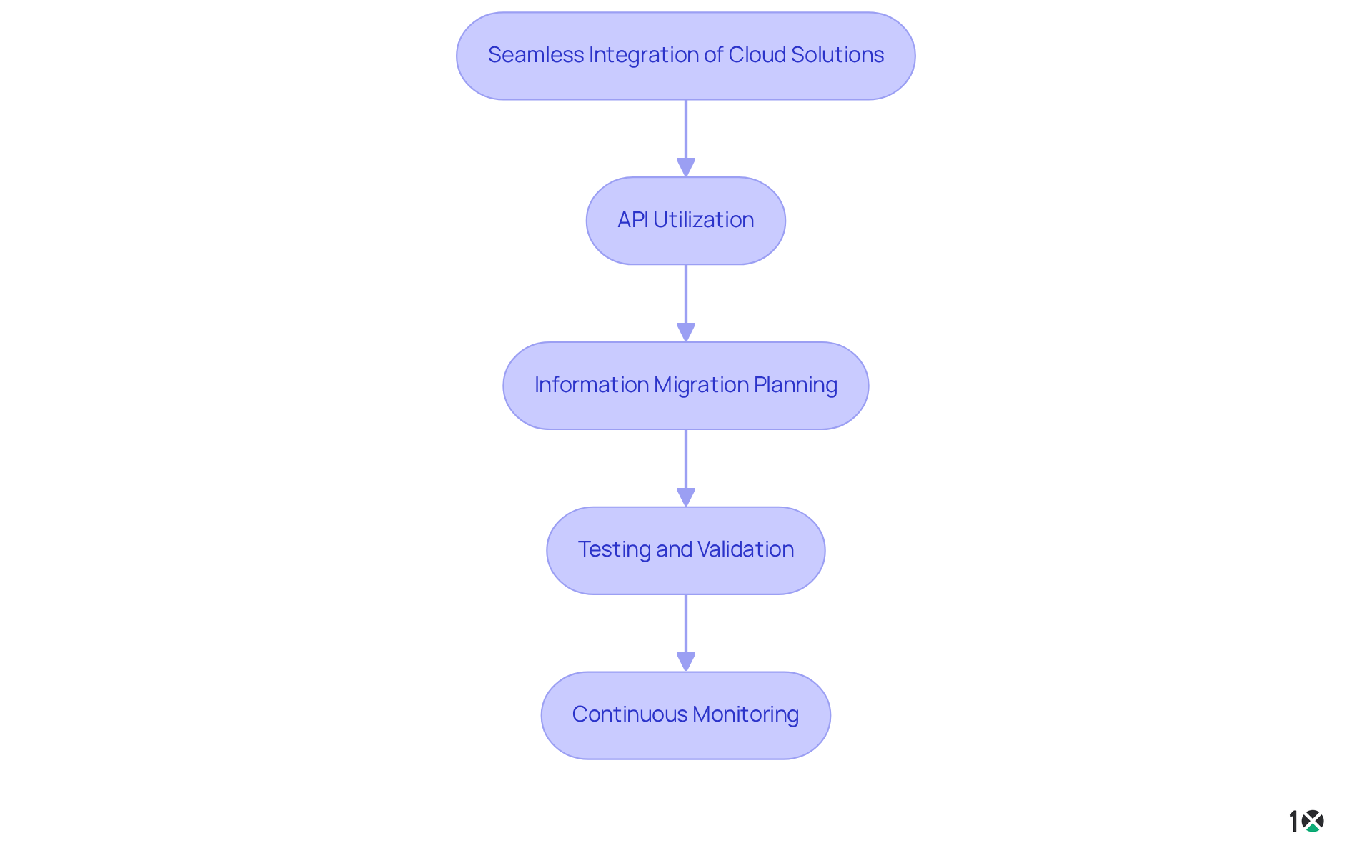
Train Staff for Successful Cloud Adoption
To ensure successful cloud adoption, consider implementing the following training strategies:
-
Assess Training Needs: Identify specific skills and knowledge gaps among staff related to cloud technologies. This tailored approach ensures that training is effective and relevant.
-
Tailored Training Programs: Develop programs that cater to various roles within the organization. By ensuring content is relevant and engaging for all employees, you foster a more knowledgeable workforce.
-
Hands-On Learning: Promote practical, experiential training sessions. These sessions enable employees to become acquainted with online tools and applications, ultimately boosting their confidence and proficiency.
-
Ongoing Support: Provide continuous support and resources post-training. This reinforcement helps address any challenges employees may encounter, ensuring lasting learning.
Investing in staff training is crucial for enabling your team to utilize cloud for business technologies effectively, which drives overall success. Research shows that firms with successful training programs achieve a remarkable 218% increase in revenue and a 24% increase in profit margins. As noted by HR professionals, “Prioritizing training enables businesses to lead with confidence, innovation, and resilience in a rapidly evolving world.” Furthermore, 90% of organizations list training as their top employee retention strategy, highlighting its broader implications. Utilizing Learning Management Systems (LMS) can also provide a competitive advantage; 72% of organizations report gains from their use. By prioritizing these strategies, you position your organization for success in the cloud for business landscape.
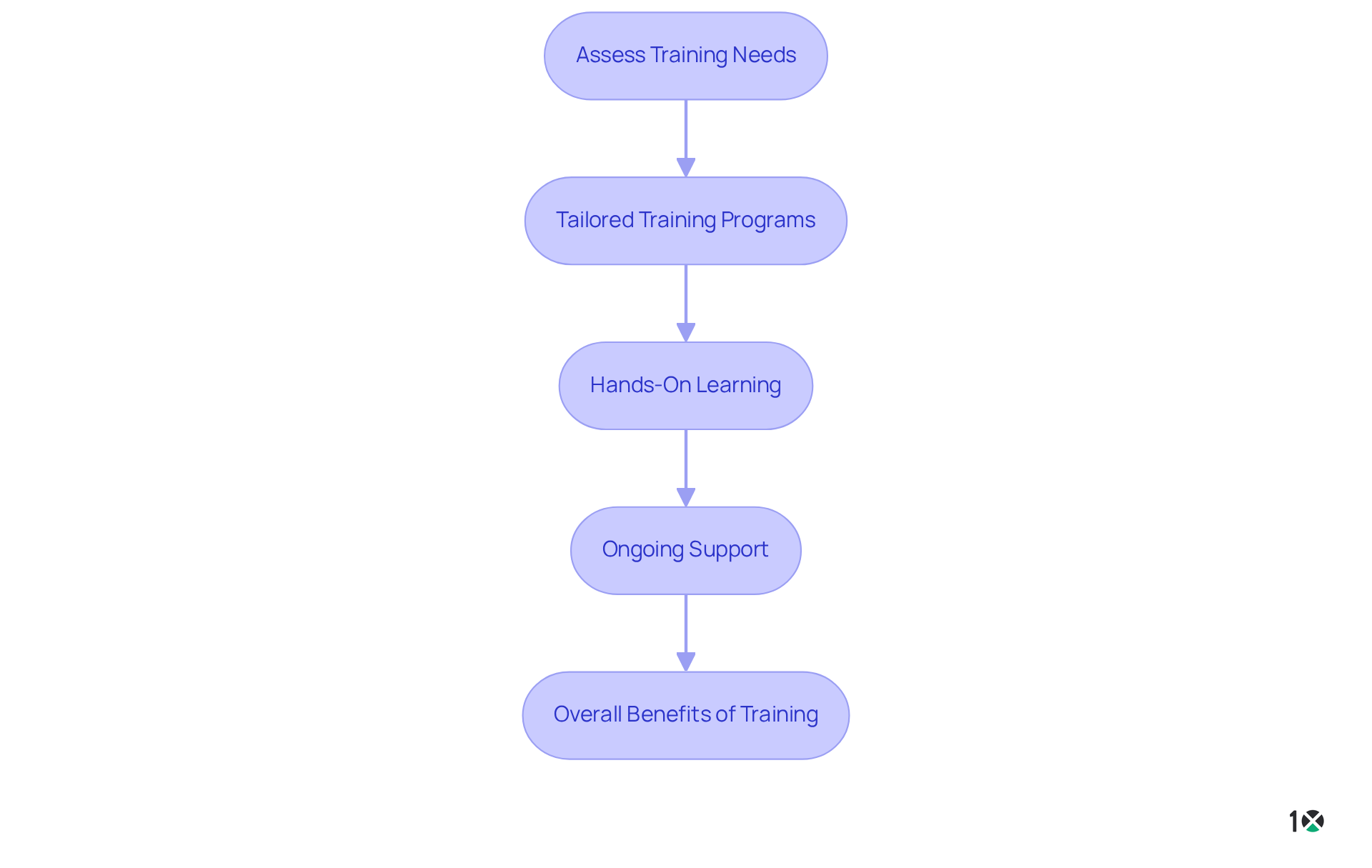
Conclusion
The integration of cloud computing into distribution businesses presents a significant opportunity for enhancing operational efficiency and scalability. By understanding the fundamentals of cloud services—such as IaaS, PaaS, and SaaS—companies can make informed decisions that align with their strategic goals. Embracing these models not only facilitates real-time data access but also fosters improved collaboration and cost savings, ultimately driving productivity in the distribution sector.
Key insights from the article highlight the transformative benefits of cloud technology, including:
- Enhanced real-time analytics, which can lead to increased revenue growth and reduced operational inefficiencies.
- The importance of selecting the appropriate cloud model—whether public, private, or hybrid—cannot be overstated, as it directly impacts data security, compliance, and overall performance.
Furthermore, successful integration with existing systems and comprehensive staff training are crucial elements that ensure a smooth transition to cloud solutions.
As the distribution landscape continues to evolve, leveraging cloud technology becomes essential for maintaining a competitive edge. Organizations are encouraged to prioritize training and development, ensuring their teams are equipped to navigate this digital transformation. By embracing the cloud, businesses can streamline their operations and position themselves for sustained growth and innovation in the years to come.
Frequently Asked Questions
What is cloud computing for business?
Cloud computing for business is a transformative approach that delivers computing services via the internet, allowing businesses to utilize resources like servers, storage, databases, networking, software, and analytics without the limitations of physical infrastructure.
What are the primary service models of cloud computing?
The primary service models include: – Infrastructure as a Service (IaaS): Provides virtualized computing resources over the internet, enabling scalability without significant upfront investments. – Platform as a Service (PaaS): Offers a framework for developers to build, test, and deploy applications with essential tools and services available online. – Software as a Service (SaaS): Delivers software applications over the internet on a subscription basis, allowing users to access the latest features without installation or maintenance.
What is the projected adoption rate of cloud service frameworks by 2025?
By 2025, approximately 90% of organizations are projected to adopt at least one of the cloud service frameworks (IaaS, PaaS, or SaaS).
How does real-time information access benefit distribution companies?
Real-time information access provides instant visibility into inventory levels, sales data, and customer information, significantly accelerating decision-making processes. Companies using real-time analytics have reported a 21% increase in year-over-year revenue growth.
What impact does implementing real-time tracking have on customer inquiries?
Implementing real-time tracking can lead to a 10% decline in customer inquiries, thereby enhancing operational efficiency.
How does 10X ERP contribute to distribution efficiency?
10X ERP offers exceptional scalability, a smooth user experience, and a fully cloud-hosted platform, allowing companies to adjust resources based on demand and pay only for what they use, leading to more predictable operational budgets.
What cost savings can businesses expect from using cloud solutions?
Businesses can reduce reliance on costly on-premises infrastructure and maintenance, resulting in annual savings of 5% to 15% through the implementation of transport management systems with real-time tracking.
Can you provide an example of a company that benefited from real-time analytics?
Coca-Cola implemented a real-time analytics system that resulted in a 20% reduction in inventory costs within the first year.
What are some benefits of improved collaboration through cloud solutions?
Improved collaboration through cloud solutions like 10X ERP enhances communication and project management, allowing teams to work together efficiently regardless of their physical locations.
What should companies be aware of when implementing real-time data solutions?
Companies should ensure proper training and change management to mitigate resistance from staff when implementing real-time data solutions.
